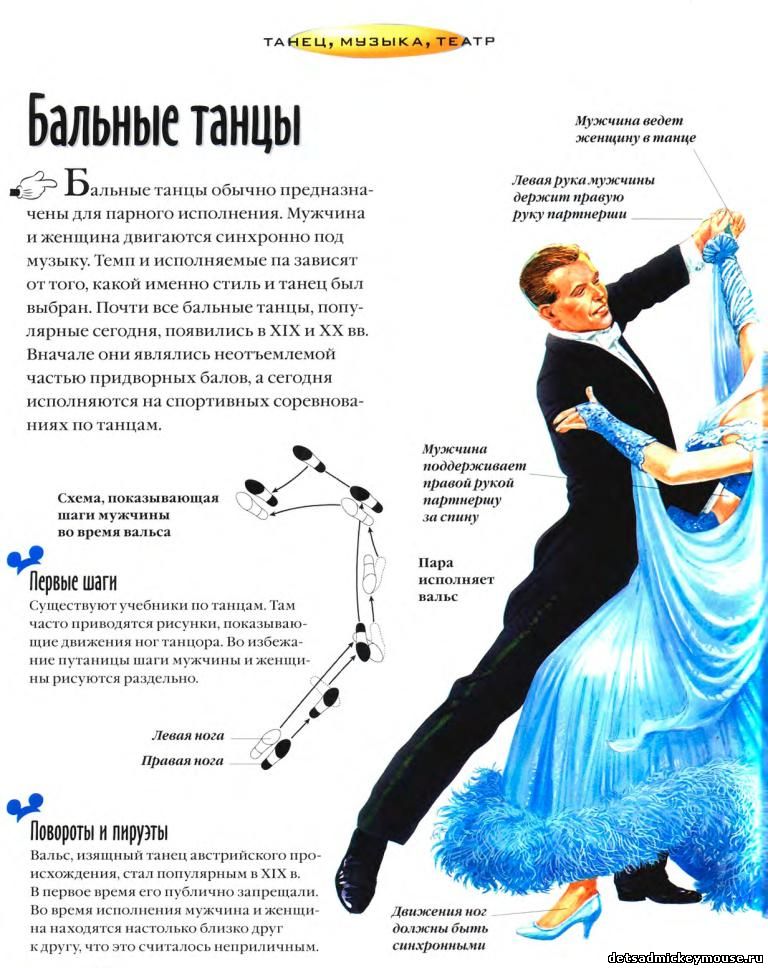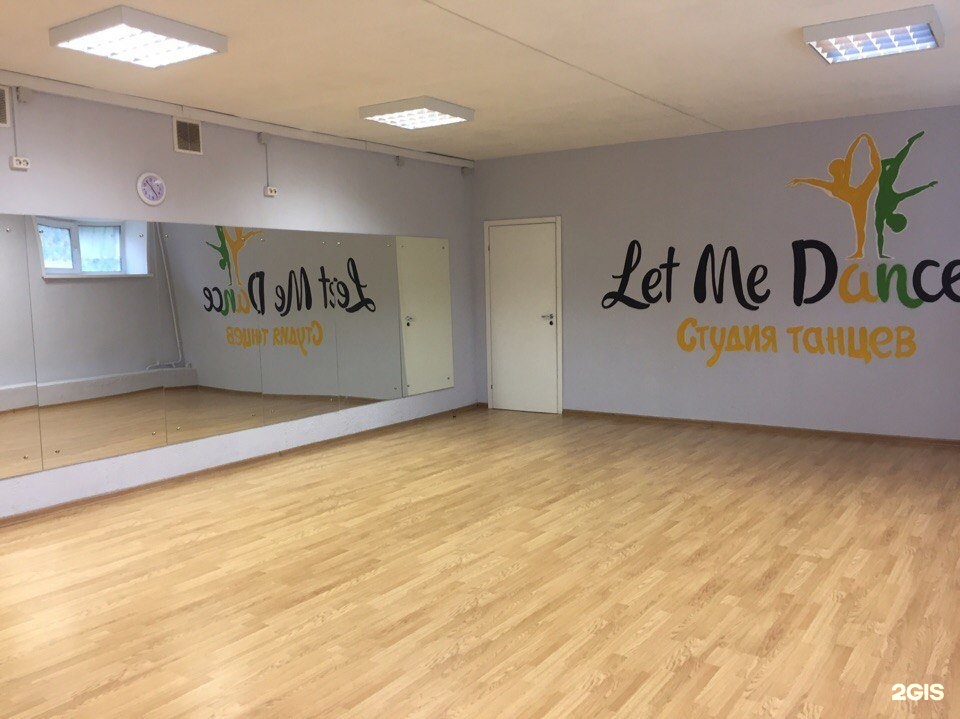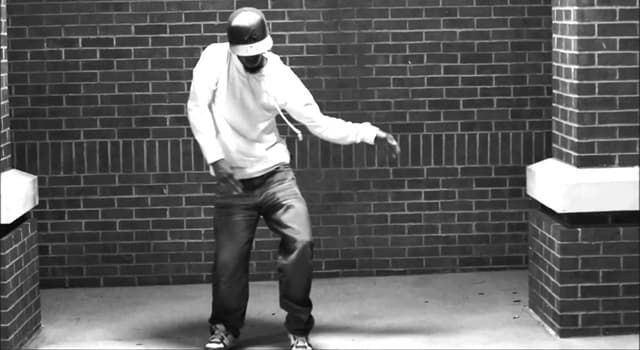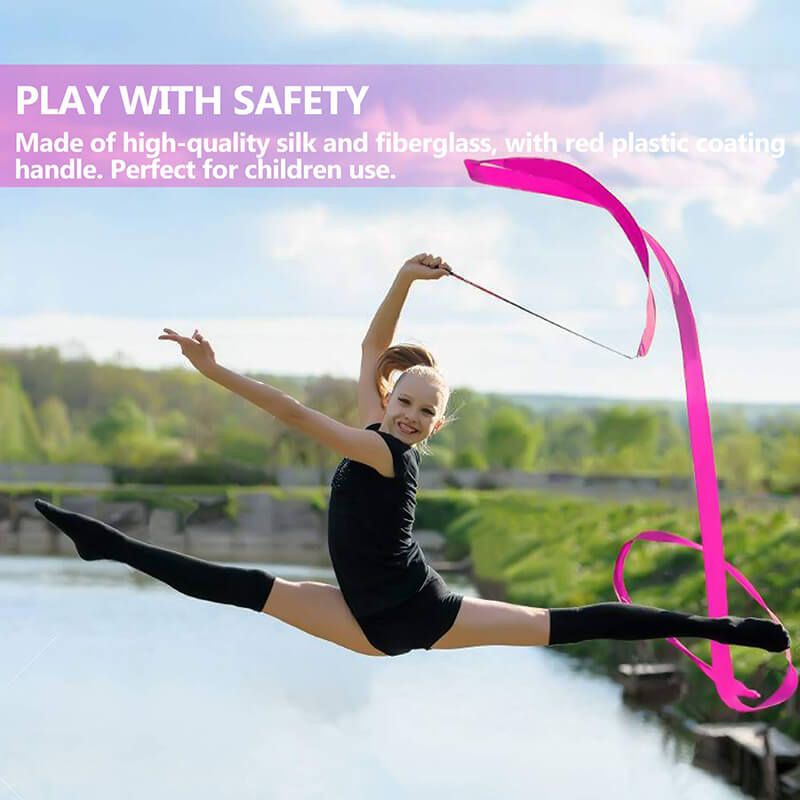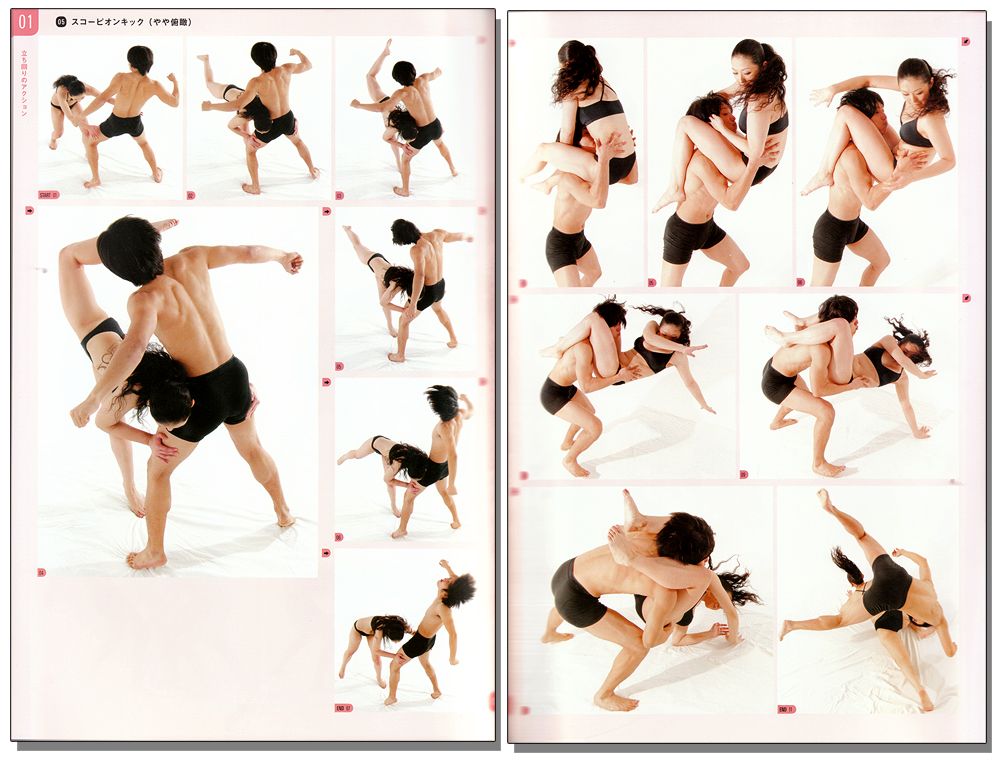How to ballroom dance easy
5 Easiest Dances to Learn for Ballroom Beginners
If you want to learn how to ballroom dance and you’re a beginner, you are in the right place. As a beginner you want to start learning easy ballroom dances so that you don’t get discouraged. You want to take it one step at a time. Having a fun and safe environment with good instructors is key to succeeding in learning how to ballroom dance.
Having a few dance steps down will come in handy in many social situations. Dance is a lot of fun and gives you a great workout. Taking dance lessons will also introduce you to new people and is a good way to make new friends. You have everything to gain by taking up dance. You will get fitter, healthier, and have a great time doing it.
So where do you begin? There are 5 ballroom dances that are pretty easy to learn. These dances are easy because they use small repeated steps. With practice and proper instruction you can master any of the dances listed below.
Here is a list of five dances that we think are the easiest to learn for beginners.
- Waltz
This is one of the easiest ballroom dances to learn. The Waltz is the easiest because it is a slow, smooth dance and only uses four steps. It has a distinctive ¾ timing with a flowing style. Once you can add a rise and fall with your body expression, you will definitely impress on the dance floor!
- Foxtrot
What a beautiful rhythmic dance that is so fun to learn. The Foxtrot is an elegant dance that is reminiscent of old Hollywood with Fred Astaire and Ginger Rogers. The dance sequence is an easy four step slow-slow-quick-quick tempo that is easy to learn. This dance flows and is very smooth.
- Swing
This is a great dance to learn because this dance will help you succeed in other dances. The basic steps used in Swing can be used for other dances, so, once you learn the Swing, you can adapt it and learn other dances. There are just a few basic steps, but the key is shifting your weight to different feet at different times. This is a fun dance that has lots of room for your personality to shine through!
This is a fun dance that has lots of room for your personality to shine through!
- Rumba
The Rumba is a sensual dance with its origin from eastern Cuba. The steps are simple with two quick side steps and a slow forward step. Because it is in the Latin style of dance, the hips are active and moving in “Cuban motion.” Adding the essential ingredient of subtle side-to-side hip movements while keeping the torso erect makes this a lovely dance to perform and to watch.
- Cha Cha
This is such a fun and playful dance that anyone would have fun learning. The Cha Cha is a fast, rhythmic ballroom dance of Latin American origin. It has a basic pattern made up of only three steps and a shuffle, danced in 4/4 time, so it isn’t complicated. The steps are small but, because it is a Latin style dance, it is full of hip motion (“Cuban motion”). And, did we mention that it is fun?!
Are you a beginner looking to improve your dance skills? At Fred Astaire Dance Studio in Durham, we cater to all levels of dancers.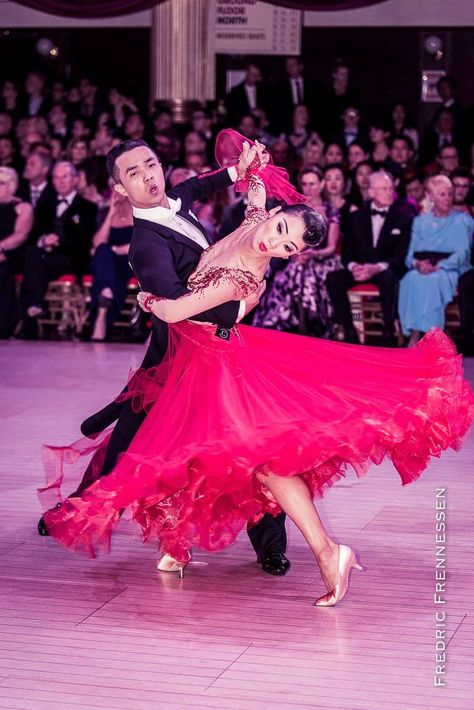 You can begin today learning these easy dance moves and enjoy the many benefits of dancing! For information on our dance classes and dance lessons, call us at 919-489-4313 or fill out our online contact form below!
You can begin today learning these easy dance moves and enjoy the many benefits of dancing! For information on our dance classes and dance lessons, call us at 919-489-4313 or fill out our online contact form below!
How To Ballroom Dance For Beginners (Videos)
Ballroom dancing is one of the classiest types of formal dancing and it includes 20+ different dances.
In this guide you’ll learn how to Ballroom dance for beginners with 3 videos (below).
But first a quick intro…
There are the traditional Ballroom dances which include: Waltz, Foxtrot, Viennese Waltz, Tango, Quickstep and more.
And then there are what are considered Latin-Ballroom dances which include: Cha Cha, Rumba, Swing, Bolero, Mambo, Salsa, Jive, Samba and more.
I’m a Beginner, Which dances should I start with?
Our recommendation is to learn the basic steps of these 3 dances: The Slow Waltz, Rumba and Cha Cha.
These 3 dances are great because they fit most of the popular music. Read more about the best social dances to learn here.
But wait, before you start learning the Ballroom basic steps below, you need to know how to take hold with your partner.
First, Learn The Ballroom Dance Hold
In this video we explain how to achieve what is referred to as “The Closed Hold” in Ballroom dancing:
The main points are:
● Leader’s left hand connects to Follower’s right hand, and held at Follower’s eye level.
● Leader’s right hand is placed just underneath the lady’s left shoulder blade area.
● Followers place their left arm on the man’s shoulder area, and press down slightly to connect with the leader’s right arm.
● When doing a strictly Ballroom dance you will have less space between you – and more space during the Latin-Ballroom dances.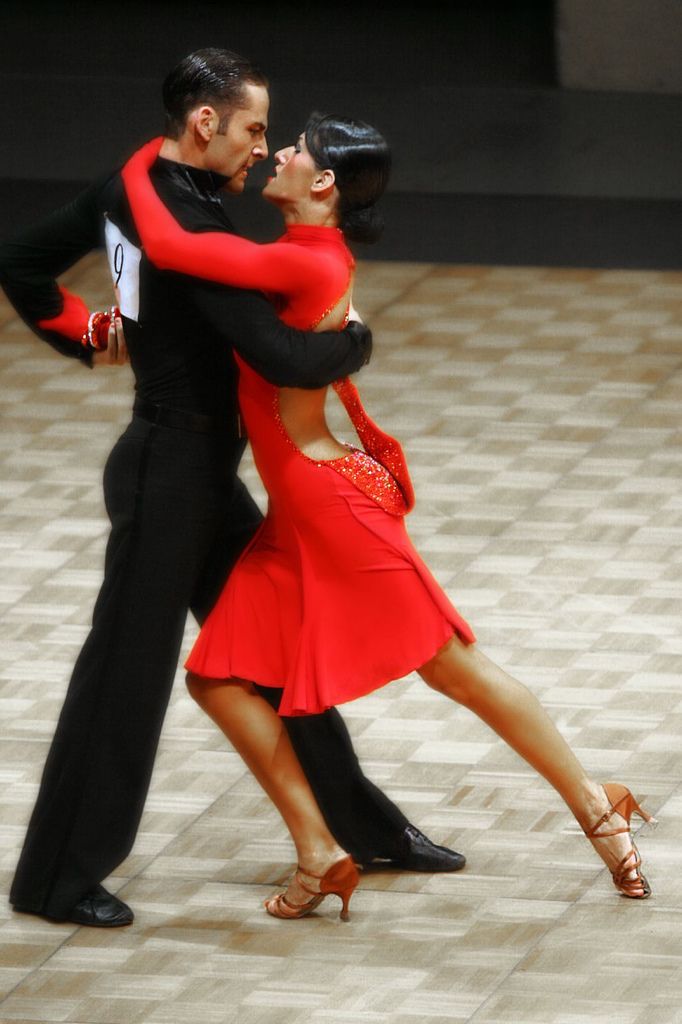
● Keep your core engaged at all times for better balance and to feel your partner’s weight.
Next, Ballroom Dance Steps (Learn The Basics)
1st of 3: Learn The Slow Waltz Basics
The slow Waltz is beautiful dance with emphasize on smooth gliding across the floor with rise and fall technique (going up and down). The main characteristic of this dance is the iconic timing of 1,2,3. Learn the basic step below.
The Waltz basic steps (The Box Step):
Breakdown of Waltz steps:
Men’s steps:
Forward with Left Foot
Side with Right Foot
Close Left Foot to Right Foot (And Switch Weight)
Back with Right Foot
Side with Left Foot
Close Right Foot to Left Foot (And Switch Weight)
Lady’s steps:
Back with Right Foot
Side with Left Foot
Close Right Foot to Left Foot (And Switch Weight)
Forward with Left Foot
Side with Right Foot
Close Left Foot to Right Foot (And Switch Weight)
Related: More on How Waltz dance here.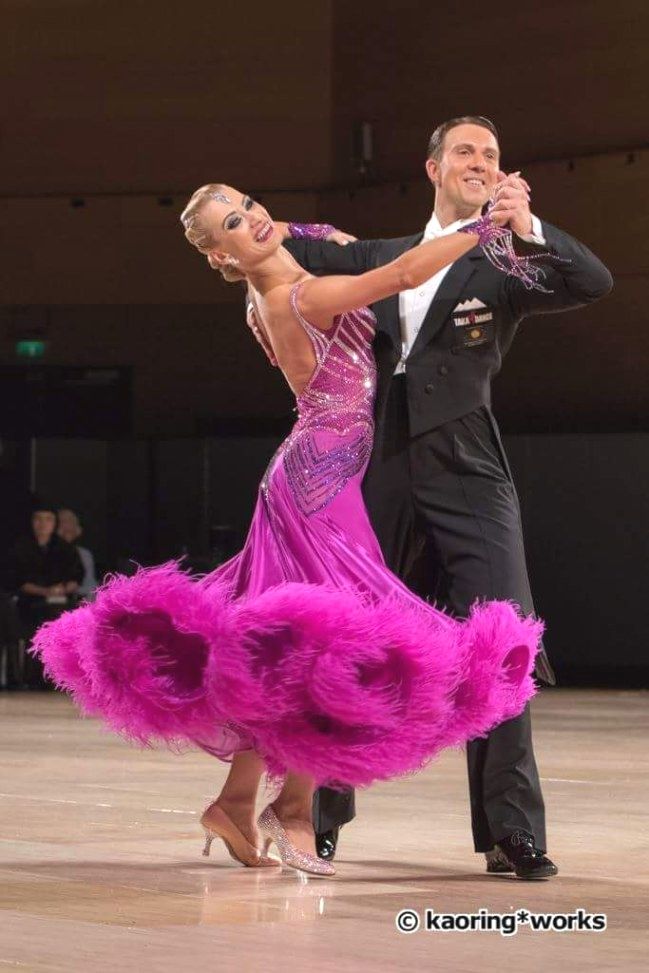
2nd of 3: Learn The Rumba Basic Steps
The American Style Rumba is one of the most social friendly Ballroom dances. The basic step is a also a box step (Just like the Waltz) but the difference here is that there is no up and down motion, instead dancers use what is called Cuban Motion technique – where the dancers bend and straighten their knees on every step – producing a hip action.
Rumba Basic Steps (The Box Step):
Breakdown of Rumba steps:
Men’s steps:
Forward with Left Foot
Side with Right Foot
Close Left Foot to Right Foot (And Switch Weight)
Back with Right Foot
Side with Left Foot
Close Right Foot to Left Foot (And Switch Weight)
Lady’s steps:
Back with Right Foot
Side with Left Foot
Close Right Foot to Left Foot (And Switch Weight)
Forward with Left Foot
Side with Right Foot
Close Left Foot to Right Foot (And Switch Weight)
Related: More on Rumba dance steps here.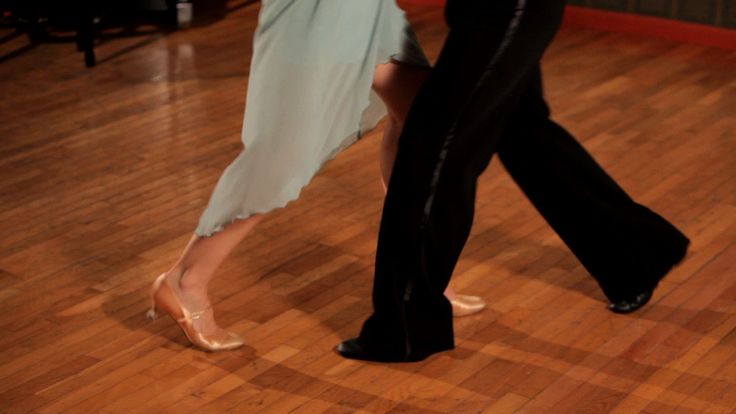
3rd of 3: Learn The Cha Cha Basic Steps
The Cha Cha dance is a very lively and fast dance. It’s a dance that has lots of quick footwork and hip actions – with emphasize on the rhythm. The main characteristic of this dance is the triple step chasses which are present through out the entire dance.
Cha Cha Basic Steps (The Side Basic Step):
Breakdown of Cha Cha steps:
Men’s steps:
Side with Left Foot
Back with Right Foot
Replace weight Forward on Left Foot
Side With Right Foot
Close Left Foot To Right Foot (Switch weight)
Side With Right Foot
Forward with Left Foot (Check action)
Replace weight Back on Right Foot
Side with Left Foot
Close Right Foot to Left Foot
Lady’s steps:
Side With Right Foot
Forward with Left Foot (Check action)
Replace weight Back on Right Foot
Side with Left Foot
Close Right Foot to Left Foot
Side with Left Foot
Back with Right Foot
Replace weight Forward on Left Foot
Side With Right Foot
Close Left Foot To Right Foot (Switch weight)
Related: More on Cha Cha dance here.
Other Dances To Learn
The following 5 dances are also great for anyone looking to expand on their Ballroom dancing learning (They are also taught in our membership). Click on them to learn them:
Learn East Coast Swing Moves
The East coast swing is a dance that originated from Lindy Hop and has lots of turn and spins. The leaders and followers both do rock steps and triple side steps through-out this dance, with bending and straightening the knees.
Learn Foxtrot basic steps
The Foxtrot is a great Ballroom dance to use to get around the rooms and at weddings and Ballroom dance parties. This is one of the easiest dances to learn because it involves 2 walks and side steps for both partners. It is a classy dance that fits may of the Frank Sinatra and Michael Bubble music.
Learn Bachata dance steps
The Bachata is a sensual Latin dance and is a perfect dance to do socially for couples. The basic steps involve side to side stepping, with the 4th and 8th steps done as taps (without change of weight).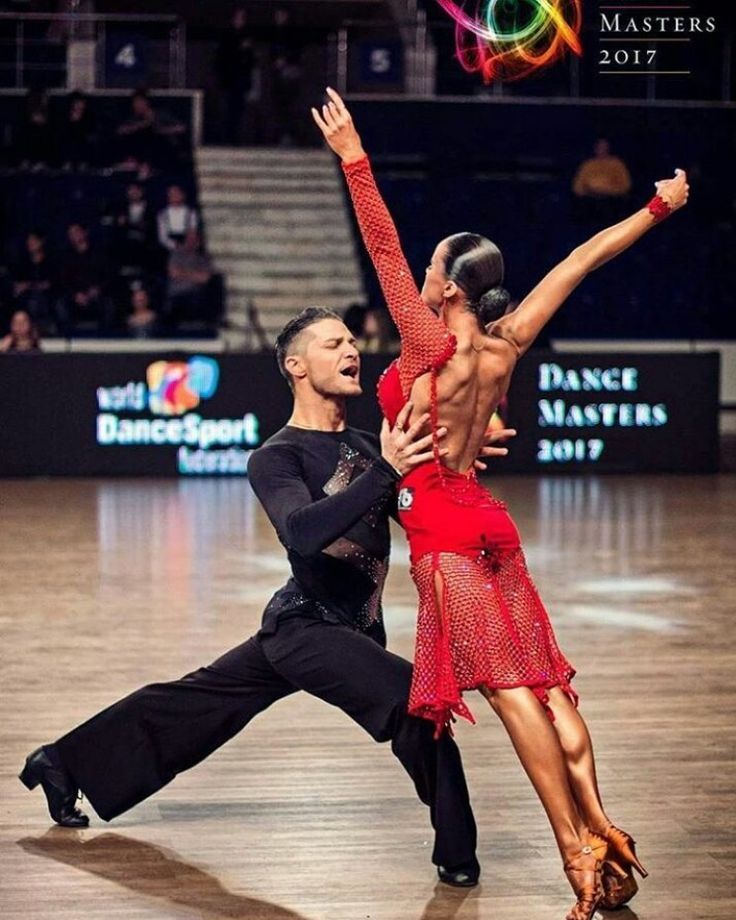 This move is great to do at Latin dance clubs and parties.
This move is great to do at Latin dance clubs and parties.
Learn Salsa basic steps
Salsa is one of the hottest Latin dances right now and it fits many of the Reggaeton music played at clubs and parties. The Salsa basic steps consist of fwd and back rock steps and aside from that many of the moves include: spins, underarm turns, hip actions and dips.
Want More Dance Lessons?
We offer a membership that includes access to 300+ Ballroom and Latin dance videos online. Including American & International style videos.
Membership Info & Registration
Dances
Author: Pavel Gather
Psychologist, Lecturer Salsa and Tango
Dances
Author: Pavel Pavel
Psychologist, Lecturer Salsa
on At the start, you always want to get a quick result.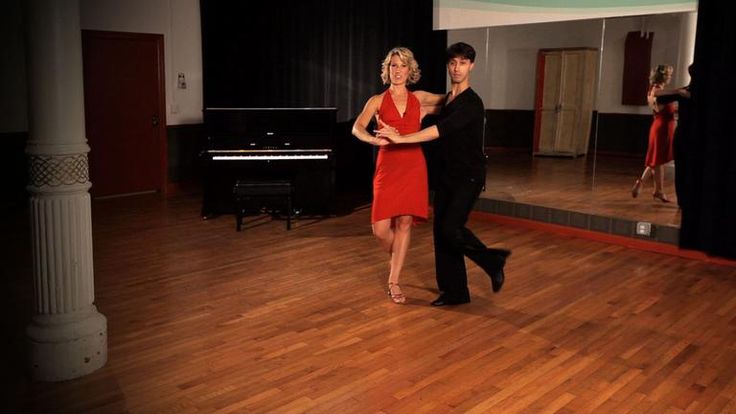 When it doesn't happen, the hypothesis arises that everything takes time. After a conditionally acceptable time, humility comes to mastering pair dances, which, perhaps, is not given, and I will just do what I learned somehow.
When it doesn't happen, the hypothesis arises that everything takes time. After a conditionally acceptable time, humility comes to mastering pair dances, which, perhaps, is not given, and I will just do what I learned somehow.
This is the most common story of those who believe that the mere act of attending a pair dance class is enough to learn how to dance.
Absolutely not. If you want to really dance well, you have to make an effort outside of the dance class. A good teacher will definitely be needed, but the initiative should be on your side.
1. Listen to music
The most common and accessible advice that is given already in the first lessons. And it definitely works. Music creates a certain atmosphere of the dance and intuitively you want to move to it. It doesn't matter where you listen to music - in the car, on headphones while walking or doing household chores.
An addition that will help you dance better is your active participation in the music. Sing along, dance or simply beat musical accents with any free parts of the body. In the subway, for example, it is enough to tap out bright moments with your fingers, in the car to sing along with sounds, and at home you can jump for pleasure.
Sing along, dance or simply beat musical accents with any free parts of the body. In the subway, for example, it is enough to tap out bright moments with your fingers, in the car to sing along with sounds, and at home you can jump for pleasure.
2. Watch videos of good dancers
It's complicated, but also obvious. It’s more difficult, because without recommendations from more experienced dancers, unfortunately, it’s not so easy to find a good quality video on the net (I mean not the resolution quality, but the content itself).
Meaningful video viewing is about building an understanding of HOW dancers make a particular impression on a partner or viewer. Technology is at the heart of everything. Understanding how the pros do it is a big step forward.
It is important to distinguish a show from a disco dance, a staged performance from an improvisation, a stylized dance from an authentic one, etc. Ask for recommendations and dance teachers will always throw off a couple of videos of worthy landmarks.
Tango Z. Showreel.
Online modern tango courses
Tango nuevo is the most advanced version of tango. We can quickly learn to dance from zero to a steep level.
| View details |
3. Dance in salsatecas/milongas/discotheques
A very delicate moment when it is worth coming to the first party. From a technical point of view, most students in 1-3 months have a sufficient set of figures and techniques to come and dance calmly. Psychologically, the same moment can be stretched out for an indefinite time. After all, it is imperative to “not lose face”, “learn more figures” and be sure what to do in case “there is an unfamiliar movement”.
In fact, the partygoers don't really care (except for a small layer of non-professional teachers who want to help inexperienced dancers by treating them as customers in the future). It is important to come and try dancing after a month of classes.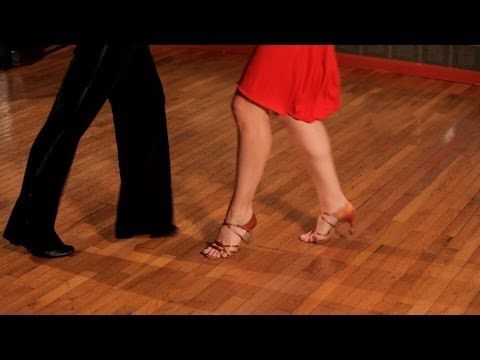 You can only with friends or guys from your group. This will be enough to feel the adrenaline and inspiration from the dance.
You can only with friends or guys from your group. This will be enough to feel the adrenaline and inspiration from the dance.
4. Dance with partners or partners not of your level
The conventional wisdom that you need to practice in groups of your level does not withstand the test of experience. Perhaps now your eyes widened in surprise, and you want to meaningfully read the phrase again. Yes, you saw everything correctly: when you dance with a partner of your level, you don’t grow anywhere.
It's important to understand that not only does it work one way and you have to dance with cooler dancers, but it works even more effectively the other way. It is no coincidence that teaching pair dances dramatically raises the level of the teacher himself. You have an endless stream of very beginner dancers.
How it works. A more experienced partner needs to be "stretched". It's easy and obvious. With beginners, you need to take more initiative on yourself, see the general pattern of the dance more widely, turn on and insure more, try to be an example and be more careful.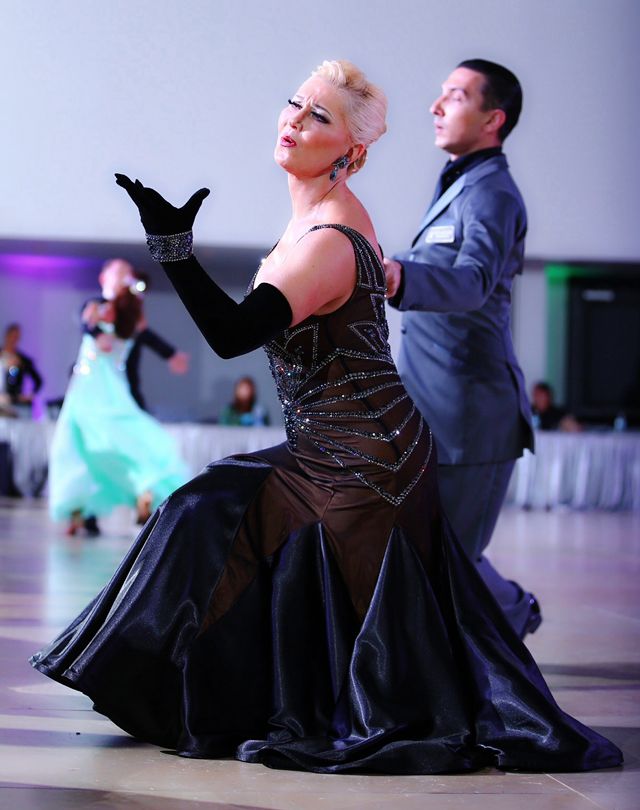 The quality of interaction begins to grow significantly. And wonderful partners too.
The quality of interaction begins to grow significantly. And wonderful partners too.
Dancing with partners of your level doesn't make you grow. Dance with both beginners and more advanced dancers
Dominican Bachata Women's Style Online Course
Want to learn how to hypnotize those around you with the most appetizing part of your body? On the course we will tell you all the secrets.
| Interesting |
5. Learn to dance for a partner and for a partner
Turks and Argentines are one of the best partners in the world. In Russia, partners are highly valued. Why? The answer is simple. In Argentina and Turkey, it is not questionable for men to ask another man to lead in one piece or another and give feedback on the quality of the lead. For them, it will be a great shame to hear moralizing from a partner, or even more so to be known in the community as an insecure partner.
In Russia, due to the constant, often far-fetched, opinion that there are more women in pair dances, partners calmly get up and study their partner's part. Such partners then grow into very cool dancers and teachers. In no case do this at parties, only in class. Here we are talking only about the learning strategy. At parties, be yourself.
6. Do not memorize the links
Always try to look deeper and understand the through principle and idea of movement. Understanding what and how is done will make it possible to independently generate any sequences and chips.
Human memory is limited and there will always be a moment when something will escape and your repertoire will be limited by the size of RAM.
In Argentine tango, for example, there are seven levels of movement construction that, when mastered, will allow you to make millions of combinations. And how many dance sequences can you really remember? In rueda, more than 150 figures dance in a rare circle.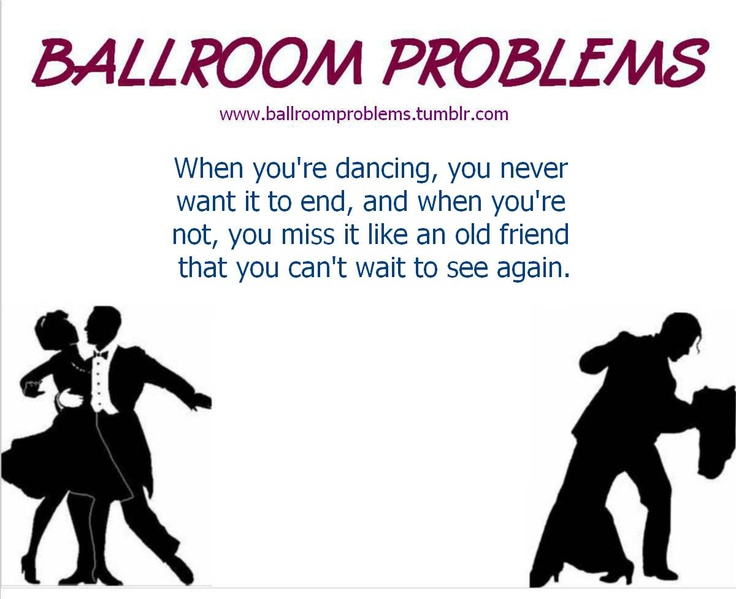 It's hard to keep more in mind.
It's hard to keep more in mind.
7. Develop your body
Many years of experience in teaching couple dance shows that as soon as everyone pairs up in a class, any progress in individual style ends. But it is the individual style that distinguishes everyone at the disco: partners change, and style is always with you.
The body as the main instrument of dance must be very plastic, responsive and emotional. Surprisingly, not all pair dance schools have a general physical warm-up. It is vital to tune the body and understand how it works.
You can always train extra and concentrate more on the basic steps, as their true value is as body work. The sequence of steps is, in fact, the simplest thing that can be in pair dancing. The quality of individual performance determines the craftsmanship.
8. Try on the images of inspiring dancers
A psychological life hack for those who have already mastered the steps, but still feel that there is not enough brightness and drive.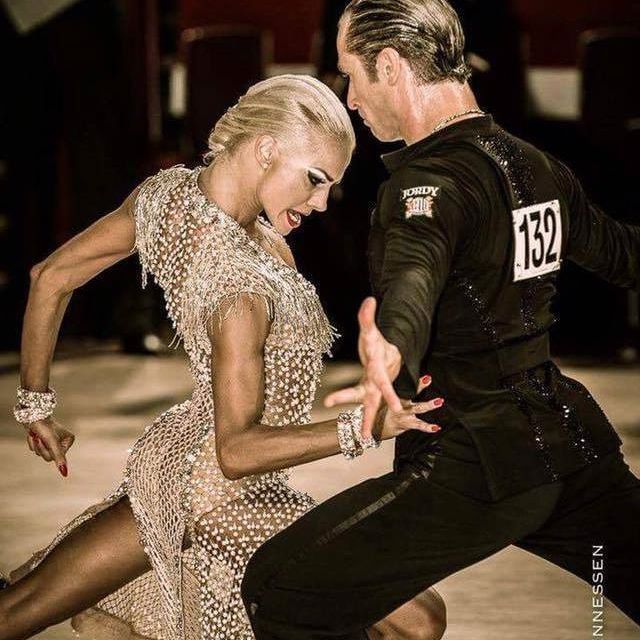 Most are terribly afraid of being someone else's "clone". Here the action is the same as under the influence of hypnosis - the more you resist, the more you plunge into an altered state of consciousness.
Most are terribly afraid of being someone else's "clone". Here the action is the same as under the influence of hypnosis - the more you resist, the more you plunge into an altered state of consciousness.
With a high degree of probability, you are already dancing like someone else's "clone". A meaningful fitting of someone else's image is that you mentally take the image of the one who inspires you (inspiration is critical in this case) and "put on" yourself. Then you start dancing and trying to feel in general how it is to be able, for example, to be the best partner or the sexiest partner in a disco. This is much more difficult than it seems. But it works extremely efficiently.
9. Dance to offbeat music
Habitual rhythms keep you tight. Tango salon or speedy timba leave little room for experimentation and fantasy. Pattern dancing is always noticeable and is reserved for beginners.
The truly new is born outside of the usual. Look for places to experiment. If there is no place, organize self-training. The main thing is not to get carried away, because music determines the style. We bring something new to pair dances, rather than trying to change them.
Look for places to experiment. If there is no place, organize self-training. The main thing is not to get carried away, because music determines the style. We bring something new to pair dances, rather than trying to change them.
Search, improvise, don’t be afraid to go beyond, develop in different directions, be inspired by music atypical for the style
10. Try your hand at basic dance directions
dances exist according to their own non-choreographic laws.
This is the deepest delusion, which has turned into a ceiling for the qualitative development of partner dances. After all, all professional dancers, for example, in salsa or bachata, build their ideas on the basic choreographic principles.
Do not think that choreography is only applicable on stage. Any meaningful movement of the body can be choreographic. In general, try classical or modern choreography. Basically, hip-hop can work too.
11. Look for battle sensations
Pair dances return us to an active position of manifestation of our body. As in the days of our ancient ancestors, we impress the members of the opposite sex by how dexterous, hardy, sexy, etc. we are. Modern laws of the jungle in the entourage of large cities.
If you look around the dance floor, it becomes clear that the majority are clearly herbivores (not in the sense of vegetarians, but in relation to those around them). I am sure that predators are always more interesting in terms of the attractiveness of the image - try to find a counterbalance among herbivores, for example, a cat woman or a lion man.
The conversation is about an internal position, not about aggressiveness. Lability and lack of control are inherent in adolescents, and not in adult self-sufficient people.
Accordingly, even a training or friendly battle gives, on the one hand, practical skills - to make a bright sequence of movements, bring an idea to a climax, show a spectacular feature, on the other hand, develops the psychological basis of the dance - self-confidence, resistance to extraneous attention, self-control and self-control in complex elements.
12. Communicate with professionals
The environment shapes the internal position. Basically, real passionaries of the dance community are ready to openly talk, discuss and support the development of dance in every possible way. Universal principles and the ideas they articulate have a much longer and more practical perspective than meets the eye.
Accept that, for example, behind the words "listen to your partner" is not only a beautiful metaphor, but also a practical skill to literally listen to your partner. At the same time, always treat every thought, even the most respected teacher, as a private opinion.
Your skill will lie in finding the scope of the idea even in conflicting opinions. Most often, the contradiction is speculative and the truth lies in the angle of perception or situationality.
Your dancing growth will stop sooner or later. This can happen at the level of three basic steps or years of experience in teaching and show performances. Regardless of your level, the suggested 12 life hacks can get you off the ground and greatly accelerate your dance growth. There is no way here without your motivation and activity. Take your dance development into your own hands. 9Ol000 Dangerous sexuality
Regardless of your level, the suggested 12 life hacks can get you off the ground and greatly accelerate your dance growth. There is no way here without your motivation and activity. Take your dance development into your own hands. 9Ol000 Dangerous sexuality
Salsa: destroyers of stereotypes
Couple dancing as a source of strength.
Self-destruction of the couple dance community
The Salsa series as a mirror of the community
Mamita Fridays: salsa, bachata
Destroying the myths about leading pair dances
Does dancing make us better?
The seven deadly sins of teachers
Why we will never dance bachata like the Dominicans
Why tango?
Dispute over musicality
Selection of dances according to alcohol preferences
Where to find inspiration for dancing?
Terrible tango nuevo
Distribution of roles in a salsa party
Argentinean tango through the eyes of a salsa dancer
Is there a predisposition to dancing?
Which is more effective: individual or group lessons?
Sexual connotations in partner dancing
How to learn to dance: video tutorials for those who are not afraid to try
January 28, 2017 Likbez Sports and fitness
If you decide to learn how to dance, don't delay.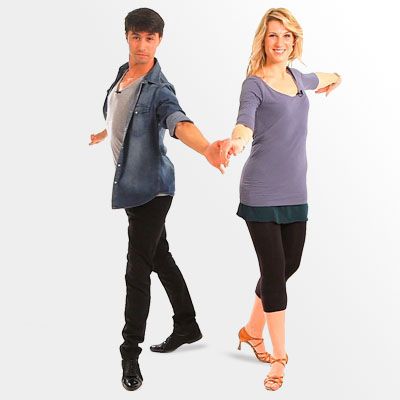 Just repeat after the instructors the basic movements of modern, street, ballroom and social dances.
Just repeat after the instructors the basic movements of modern, street, ballroom and social dances.
Iya Zorina
Author of Lifehacker, athlete, CCM
Answers to the main questions
Is it difficult to learn to dance?
It's really no more difficult than anything you're new to. Dance directions are very different from each other. Even if you have mastered one of them, it will be unusual for you to do the other.
However, all dances are connected with the ability to control one's body. And if this is not new to you (for example, you were engaged in martial arts, gymnastics, swimming, and even more so dancing), it will be easier for you to adapt to new movements than a beginner who is not friendly with his body.
Even if you have a fairly wooden body, don't despair. The secret of success is constant practice.
Learning to dance from video lessons is more difficult than from courses.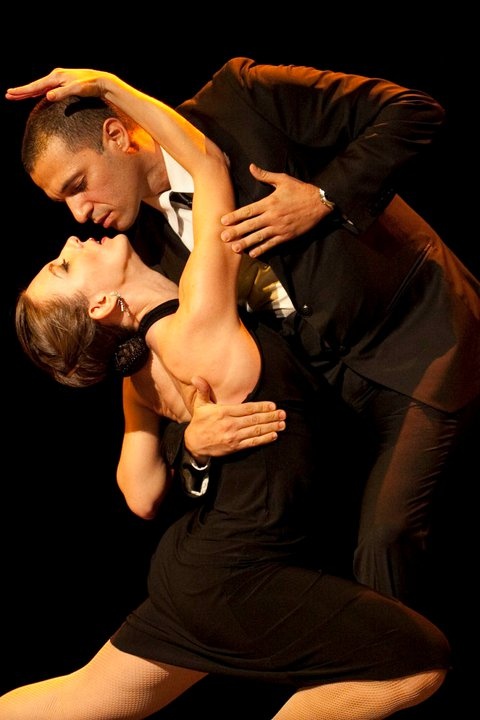 If your body is flexible and obedient, you can still do something similar to the movements of the instructor from the video. If not, you can quickly become disillusioned with dancing: the difference between what is shown in the video and what you will see in the mirror will be too strong.
If your body is flexible and obedient, you can still do something similar to the movements of the instructor from the video. If not, you can quickly become disillusioned with dancing: the difference between what is shown in the video and what you will see in the mirror will be too strong.
Still worth a try. At least in order to determine the appropriate direction.
How many times a week do you dance?
Muscles may initially ache after exercise. But, unlike strength training or running, the body does not require a recovery period.
Therefore, you can safely practice dancing all the time. One of my teachers said to dance 25 hours a day. In any case, the more you dance, the more noticeable the progress.
How to learn to dance modern dances
From this direction we have chosen three types that can often be found in the schedules of fitness clubs and dance schools. And the first - plastic and insanely beautiful contemporary.
Contemporary
Abel M/Flickr. com
com Contemporary combines elements of modern jazz, yoga and martial arts, seasoned with improvisation and attention to breathing. This is freedom and plasticity - the natural beauty of movement.
Here is a clip with a contemporary combination. Give it a try, just be sure to warm up and stretch well before you teach.
And here is the second part:
By the way, about the warm-up. In the video below - a full lesson with a warm-up, stretching and analysis of the combination. In English, but everything is clear and without translation.
If you don’t have time to repeat or consider how some movement is done, set the speed to 0.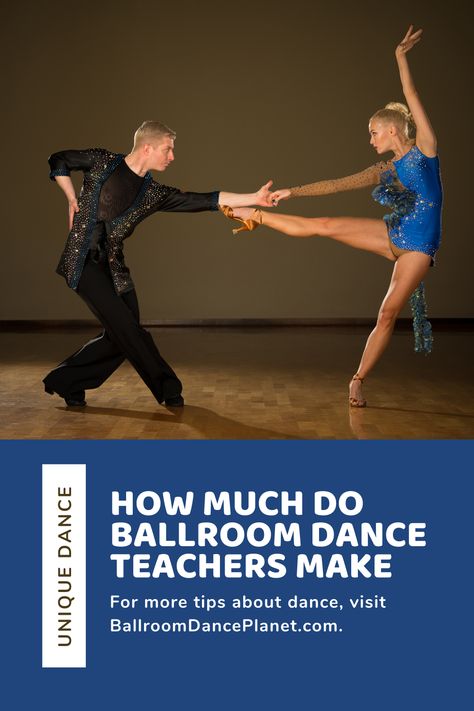 25.
25.
If you like combinations but can't repeat them yet, here are some more videos of routine contemporary lessons.
You will most likely have to do the same in the dance school before you can perform beautiful combinations.
Strip plastic
imperiamarket.byMany people confuse pole exercises and strip plastic. The second is just a sensual dance that can be performed without a pole.
When doing strip plastic, you will not stand at the barre and pull your toe. Everything here is based on the natural sexuality of the female body. Of course, many teachers diversify strip plastic with elements of contemporary or modern, Latin American dances and other areas, but it all depends on the teacher.
How beautiful your dance will look again depends on how well you can control your body, how mobile your joints are and how stretched your muscles and tendons are.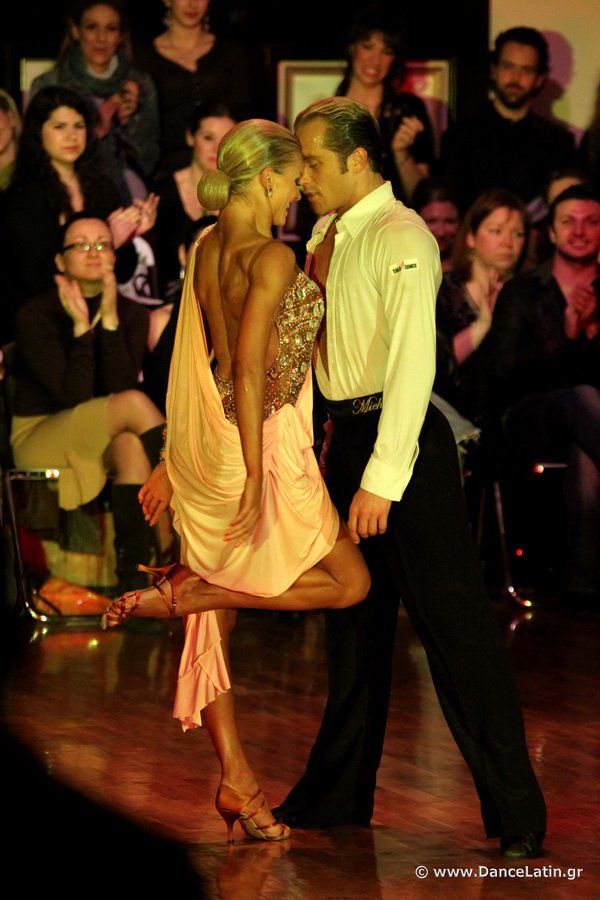
In the video below there is an analysis of the combination. Not too simple, but very sensual and beautiful. And you don't have to move on the floor, so your knees don't get hurt.
And here is a playlist with strip plastic lessons from different dance schools. There are both individual movements and combinations.
And one more, simpler combination. Try it if the first one doesn't work.
Bellydance
júbilo haku/Flickr.com This is a sensual and beautiful dance, which, among other things, helps to develop plasticity and even get rid of some health problems.
There are a lot of belly dance lessons on YouTube. Below are some of them.
The basic movements are explained very clearly here:
And the second part:
Below is a playlist with five lessons for beginners from another teacher.
How to learn to dance street dance
Hip-hop
pinterest.comHip-hop has only been around for about 50 years. But during this time, many trends and styles have appeared, with different elements, plasticity, and special features.
In addition, modern hip-hop is often complemented by movements from other dance styles, which provides even richer vocabulary and original combinations.
But before you come up with your own combinations, you need to master the basics. In the playlist below you will find basic moves, steps and many combinations. They explain everything in an accessible way. If you can't make it, slow down the video speed.
The videos in the next big playlist explain the concepts of inertia, manipulation and isolation in hip-hop. There's also a story about improvisation, battle behavior if you're up for it, and a few variations of ground hip-hop moves (on the floor) to diversify your combinations.
Breakdancing
Colonne/Flickr.com Breakdancing consists of different elements: tricks and power movements on the floor, waves, fixations, and also changes in the levels at which the dance is performed.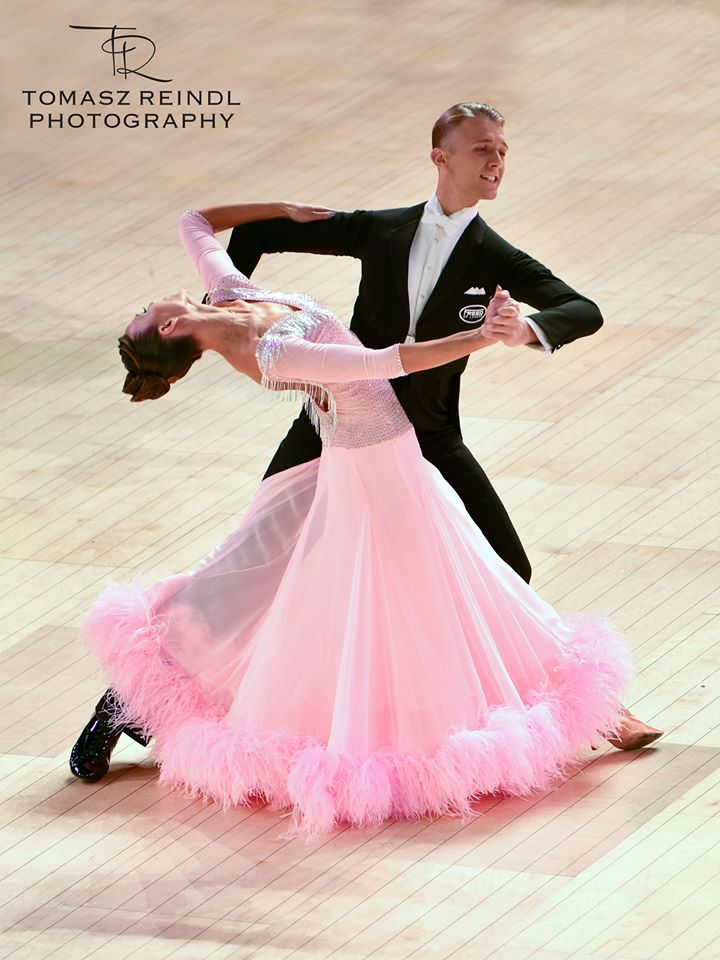
Here on this channel there is training in different styles: Waving, King Tut, Robot, - an analysis of the technique of power elements and basic movements at different levels.
Below is a video detailing the 6 steps element from Footwork.
And here you can see how the "turtle" is performed.
Here is a voluminous playlist, in which there are quite a lot of breakdance elements with a detailed analysis of the technique of dance and strength elements.
Twerk
Lauren Wood/Flickr. com
com Sexy dance in which you need to actively work the buttocks, hips, stomach and arms. In this playlist you will find several lessons with analysis of twerk movements.
How to learn to dance ballroom dancing
Waltz
vimbly.comAt least once in your life you will surely need a waltz. Moreover, it is not so difficult to dance it at an amateur level.
Here are four good lessons that will teach you how to hold your hands and do the basic waltz steps in pairs or individually.
How to learn to dance social dances
Social dances are not designed for competition, but for communication between partners and enjoyment. Improvisation is welcome here, through which the dancer can express himself, his feelings and emotions.
Improvisation is welcome here, through which the dancer can express himself, his feelings and emotions.
Bachata
pinterest.comThis dance comes from the Dominican Republic. He is very sensual and sometimes erotic. The basis of bachata is four steps with an emphasis on the last one. In the dance, there are rotations and throws of the partner, small lifts.
Despite the fact that bachata is a pair dance, solo combinations can also be taught. For example, if you don't have a partner yet.
In the video below - an overview of the main steps. Where to transfer body weight, how to hold hands, how to focus - everything is told in the most detailed way.
And here is a variation of bachata from the same teacher.
Below is a playlist for those who want to dance bachata together.